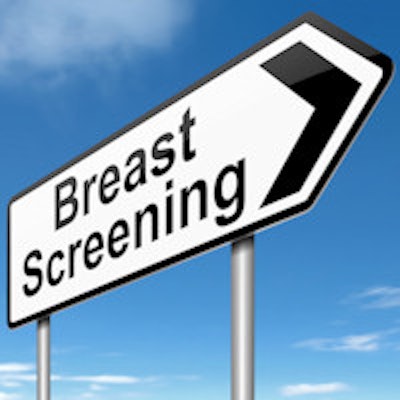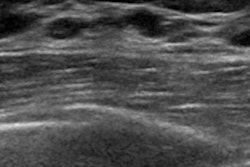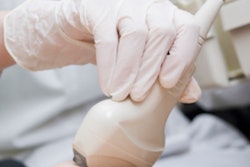
The rise of the breast density movement has more women's health practices turning to ultrasound as an adjunct to mammography screening. A new study in the June issue of the American Journal of Roentgenology found that automated breast ultrasound (ABUS) can meet this need, without the drawbacks of handheld ultrasound.
To date, 27 states have passed legislation that requires women to be informed if they have dense tissue on mammography and offered additional imaging. This is usually in the form of handheld ultrasound, but the modality has some drawbacks, including operator variability.
That's where ABUS comes in, according to the new study (AJR, June 2016, Vol. 206:6, pp. 1341-1350).
"The development of screening automated breast ultrasound allows improved detection of breast cancer, standardization, and efficient workflow integration," wrote lead author Maryellen Giger, PhD, of the University of Chicago, and colleagues.
How well do rads read?
Exactly how effective is ABUS for finding cancer in women with dense tissue? To find out, the researchers compared the performance of radiologist readers using digital mammography alone with digital mammography and ABUS.
For the study, Giger and colleagues tapped 17 radiologists to read a cancer-enriched set of 185 full-field digital mammography (FFDM) and ABUS exams taken of asymptomatic women with heterogeneously or extremely dense breasts. The case set came from the SomoInsight study by Brem et al and published in Radiology in 2014. The study included more than 15,000 women who underwent mammography and ABUS at 13 facilities across the U.S. between 2009 and 2011.
The interpreting radiologists first read digital mammography exams alone, followed by digital mammography exams combined with ABUS. Out of the total cohort, 133 exams were benign and 52 showed cancers subsequently confirmed by biopsy. Once the exams had been interpreted, Giger and colleagues assessed the performance of the radiologist readers, calculating sensitivity, specificity, and area under the curve (AUC).
Adding ABUS improved the AUC and sensitivity of all readers. Of the 52 cancers, 31 were identified only with the addition of ABUS, the authors wrote.
| FFDM alone vs. FFDM with ABUS | |||
| Performance metric and dataset | FFDM alone | FFDM + ABUS | Change in value due to ABUS |
| AUC | |||
| 52 cancers | 0.72 | 0.82 | 14% |
| 31 cancers not found on mammography ("mammography-negative") | 0.60 | 0.75 | 25% |
| 16 mammography-negative cancers without prior breast interventions | 0.57 | 0.78 | 36.8% |
| Sensitivity | |||
| 52 cancers | 57.5% | 74.1% | 16.6 percentage points |
| 31 mammography-negative cancers | 38.5% | 62.4% | 23.9 percentage points |
| 16 mammography-negative cancers without prior breast interventions | 32.4% | 68.1% | 35.7 percentage points |
Overall specificity was 78.1% for digital mammography alone and 76.1% for digital mammography plus ABUS.
In addition, using ABUS rather than bilateral handheld ultrasound to screen women is more efficient in terms of a practice's workflow, Giger and colleagues wrote. Acquiring the typical three images per breast with ABUS takes just over a minute, while using handheld ultrasound can take up to 20 minutes.
This factor alone makes ABUS attractive, especially as more and more women with dense tissue are encouraged to undergo additional screening, according to the authors.
"The scanning times for handheld ultrasound make it difficult, if not unfeasible, to easily integrate handheld screening ultrasound into the screening environment," they wrote.
What's the bottom line? Adding ABUS to digital mammography helps readers find more mammography-negative and mammography-positive cancers in women with dense breast tissue, without a significant reduction in specificity, noted contributing author Dr. Rachel Brem of George Washington University in Washington, DC.
"It can be difficult for radiologists to figure out exactly what's the best way to integrate ultrasound into the workflow," Brem told AuntMinnie.com. "ABUS is a good bet. It finds more cancers -- clinically significant ones -- and it's efficient."




















